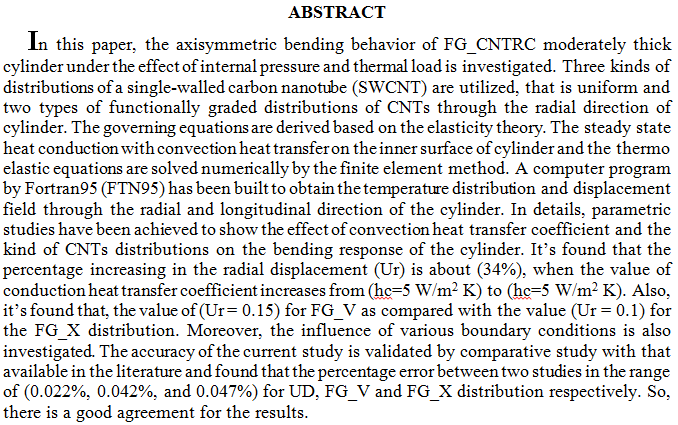
Abstract
Rayleigh distribution is one of the important distributions used for analysis life time data, and has applications in reliability study and physical interpretations. This paper introduces four different methods to estimate the scale parameter, and also estimate reliability function; these methods are Maximum Likelihood, and Bayes and Modified Bayes, and Minimax estimator under squared error loss function, for the scale and reliability function of the generalized Rayleigh distribution are obtained. The comparison is done through simulation procedure, t
... Show More (9)
(9)
 (13)
(13)
 (6)
(6)
 (4)
(4)
An update of our research is the first to develop and reform the agricultural sector . and promoting production and productivity of this sector multi-sources , which is the management and beekeeping one source . Been applied to the style of beekeeping mobile promiscuous includes twentieth cell in the Iraqe project of mussiab . in which there exist a variety of crops and trees .
Experiment had proved successful and led to raise the level of npoduction of single Dell of the honey to 49 kg over the previous year and surpassed the average production percell in the province of Babylon , which the amount of 13.945 kg , another
... Show More (12)
(12)
 (9)
(9)
Summary The objective of the research is to learn the design of a learning educational learning according to the theory of Ausubel in the acquisition of geographical concepts among the students of the fourth primary in the field of geography and the development of their habits of mind. To achieve this, the researcher relied on the two hypotheses the researcher used the design of equal groups the first experimental group was studied according to the design educational educational learning according to the theory and the other is an officer according to the traditional method. The research community consists of fourth grade pupils in primary school day for girls in the Directorate of Education Baghdad, Al-Rusafa, the third academic year 20
... Show MoreAim: This study aimed to compare different types of ligation methods to obtain maximum tooth movement with the least undesirable rotation. Methods: Titanium brackets bonded to acrylic canine teeth were ligated to straight stainless steel (SS) archwires using four ligation methods (figure-O and figure-8 elastics, SS ligatures, and Leone Slide ligatures). The teeth with the ligatures in place were stored in a water bath at 37ºC for 1 day, 1 week, 2, 4 or 6 weeks before testing. The teeth were retracted through softened wax along the archwire and the amount of tooth movement and degree of rotation were measured. Results: Slide ligatures showed the highest distance of tooth movement and degree of canine rotation followed by figure-O elastics
... Show More (10)
(10)
 (5)
(5)
 (15)
(15)
 (11)
(11)
